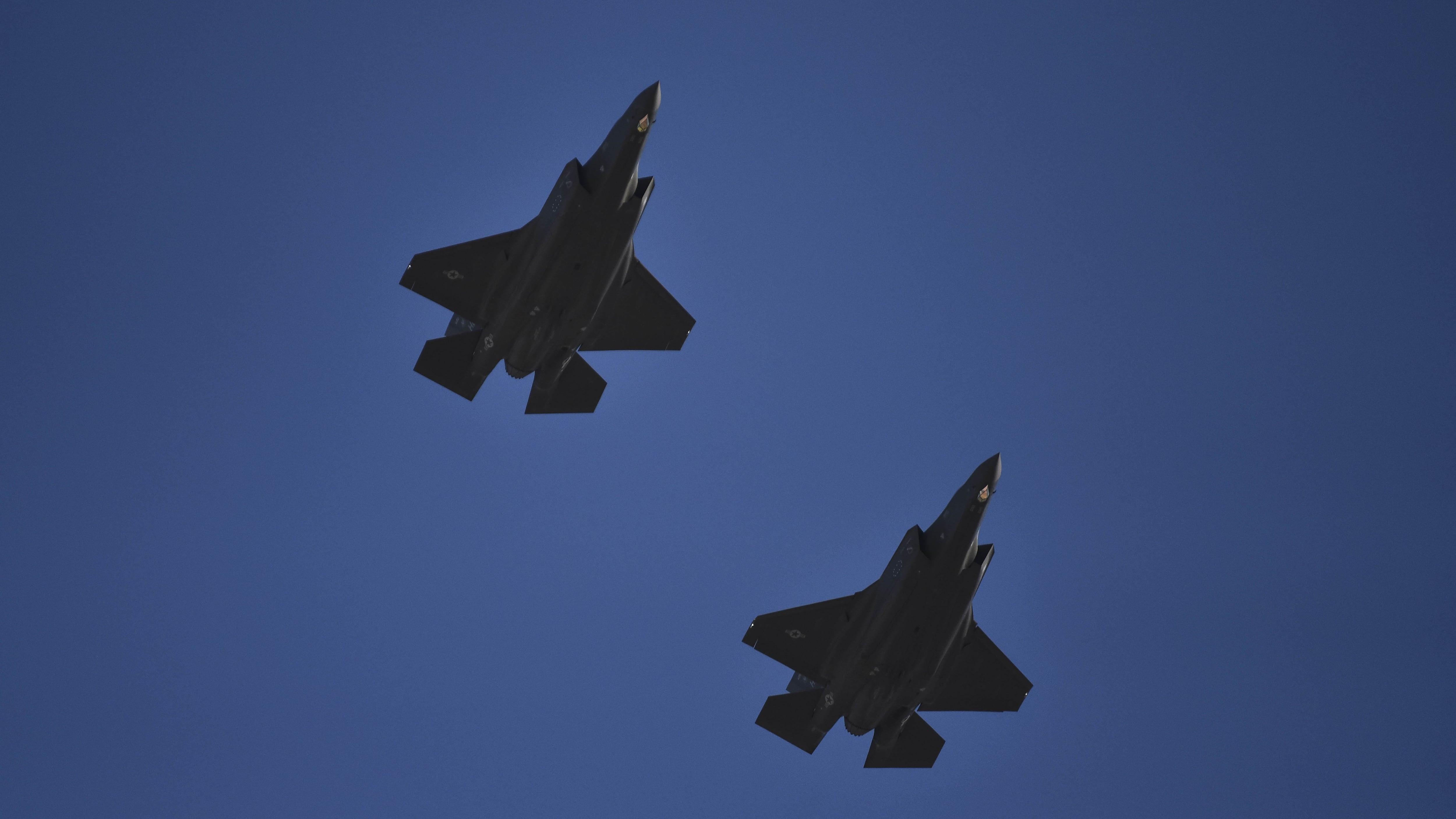The U.S.-led coalition countering ISIS in Iraq and Syria dumped 80,000 pounds of bombs on Qanus Island in Iraq on Tuesday to prevent the Islamic State from using the island as a refuge.
According to Operation Inherent Resolve spokesperson Col. Myles Caggins III, U.S. Air Force F-15 Strike Eagles and F-35 Lightning II aircraft conducted the strike. Caggins also shared a video on social media showing the strike against the “Daesh infested island.”
The F-35A Lightning IIs from the 388th Fighter Wing and the 419th Fighter Wing, both at Hill Air Force Base in Utah, arrived at Al Dhafra Air Base in the United Arab Emirates April 15, the first time the Air Force’s most advanced fighter jet has been deployed to the Middle East. They are assigned to the 4th Expeditionary Fighter Squadron.
According to CENTCOM, the operation was designed to halt ISIS insurgents from going undetected in the island’s thick vegetation.
"We're denying Daesh the ability to hide on Qanus Island," Maj. Gen. Eric T. Hill, commander of Special Operations Joint Task Force, said in a CENTCOM statement. "We're setting the conditions for our partner forces to continue bringing stability to the region."
Deputy Combined Air Component Commander Maj. Gen. Chance Saltzman said the strike was the culmination of months of research and intelligence collection.
“Our intelligence professionals always work diligently to maximize the effectiveness of air strikes while at the same time taking care to avoid civilian casualties and unnecessary damage to civilian infrastructure,” Saltzman said in a statement to the Air Force Times. “This massive strike exhibits that expertise and careful application of airpower.”
RELATED

Iraqi special operations forces also conducted ground clearance operations to stop ISIS members from using the island as a “major transit hub” as they travel from Syria into Mosul, Makhmour and the Kirkuk regions in Iraq, according to CENTCOM.
The island is near Qayara West Airfield south of Mosul, which coalition forces seized in 2003 and used until 2010. ISIS forces briefly took over control of the base as they took over Mosul in June 2014 and surrounding areas. But U.S.-backed forces retook the base after forcing ISIS out of Mosul in 2017.
President Donald Trump’s administration announced March 23 that ISIS no longer had control over the territory it deemed its “caliphate.”
Even so, Army Lt. Gen. Paul LaCamera, Combined Joint Task Force-Operation Inherent Resolve commanding general, warned that ISIS was planning to re-emerge in the future.
“Make no mistake, Daesh is preserving their force,” LaCamera said in a statement in March. “They have made calculated decisions to preserve what is left of their dwindling personnel and capabilities by taking their chances in camps for internally displaced persons and going to ground in remote areas. They are waiting for the right time to re-emerge.”





